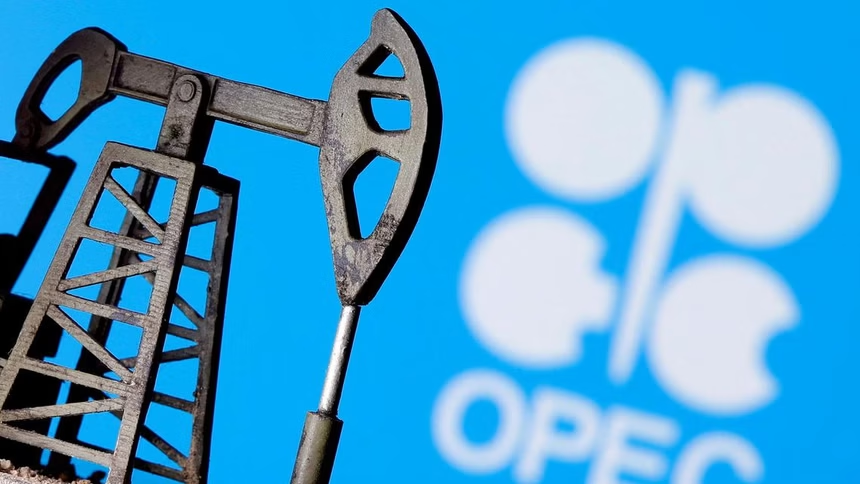In a surprising and bold move, the Organization of the Petroleum Exporting Countries and allies—collectively known as OPEC+—announced they will increase oil production by a total of 411,000 barrels per day starting May 2025.
The group includes major oil producers such as Saudi Arabia, the United Arab Emirates (UAE), Kuwait, Oman, Russia, Iraq, Kazakhstan, and Algeria. The decision reflects growing optimism among these oil-exporting nations about the state of the global economy and oil demand in the coming months.
The announcement was made after internal discussions and follows an agreement initially formed in December 2024 to gradually ease voluntary production cuts that had been in place to stabilize the oil market over the past year.
Why This Decision Matters
OPEC+ had previously agreed to phase out voluntary cuts gradually over the span of three months—April, May, and June 2025. However, in a notable change of strategy, the group has now accelerated this plan by front-loading the increase, effectively releasing three months’ worth of output hikes in May itself.
This move means oil producers are betting on stronger oil demand in the coming quarter and aiming to take advantage of what they believe are “healthy market fundamentals” and “a positive global economic outlook.”
Sources close to the talks cited a desire to pre-empt potential supply shortages later in the year, especially as summer fuel demand typically rises in many parts of the world.
The Background: What Led to This?
Since 2020, the global oil market has gone through unprecedented swings. After the COVID-19 pandemic crushed demand, OPEC+ imposed significant output cuts to prevent oil prices from collapsing.
By mid-2023 and into 2024, as economies reopened and demand picked up, the group began slowly restoring supply. Yet, some voluntary cuts continued—especially from major producers like Saudi Arabia and Russia, who took additional steps to prop up prices.
In December 2024, OPEC+ members agreed to start unwinding those voluntary cuts, phasing them out between April and June 2025. The goal was to gradually bring back 2.2 million barrels per day of withheld production.
But instead of sticking to a cautious, month-by-month plan, the eight participating countries—Saudi Arabia, Russia, Iraq, UAE, Kuwait, Kazakhstan, Algeria, and Oman—now intend to bring back 411,000 barrels per day all at once in May.
This larger-than-expected increase has sparked mixed reactions from analysts and markets alike.
Market Response: Oil Prices Drop Sharply
Following the announcement, oil markets reacted quickly—and sharply.
- Brent crude, the international benchmark, fell more than 6%, trading below $70 per barrel.
- West Texas Intermediate (WTI), the U.S. benchmark, dropped nearly 7%, falling to around $66 per barrel.
These are significant price movements, and analysts say they reflect immediate fears of oversupply in a market still facing a number of uncertainties—from sluggish global growth, ongoing geopolitical tensions, to the risk of fresh trade barriers.
Some analysts also pointed to new U.S. tariffs announced by President Donald Trump as a factor adding pressure to oil prices and investor confidence. The combination of more oil and potential global economic slowdowns raised red flags about whether demand can keep up with rising supply.
Focus on Compliance: Kazakhstan Under Scrutiny
While the increase is significant, OPEC+ made it clear that compliance remains a top priority.
Countries like Kazakhstan have been producing well above their agreed quotas in recent months, undermining group efforts to balance the market.
In response, OPEC+ leadership stressed the importance of sticking to agreed production levels. Officials noted that any future increases or reductions will depend on the situation in the oil market and compliance with output targets.
The group’s Joint Ministerial Monitoring Committee (JMMC) will meet again on May 5, 2025, to review market conditions and decide on June production levels. There is still flexibility in the agreement, and OPEC+ retains the option to adjust output again if needed.
Energy Analysts: A Calculated Risk
Industry experts say OPEC+ is taking a calculated risk by increasing supply now.
“This is a clear signal that OPEC+ believes the market can handle more barrels without crashing prices over the long term,” said a senior energy analyst at S&P Global. “But it’s a tightrope—they’re trying to balance between regaining market share and avoiding another price war.”
The move may also be aimed at countering rising production from non-OPEC countries, especially the United States, which has been steadily increasing shale output. OPEC+ producers may be trying to prevent others from eating into their market share while prices are still attractive.
Geopolitical and Economic Impact
This OPEC+ decision will likely have ripple effects across industries and global economies.
- For oil-importing countries, lower prices could help reduce inflationary pressure and fuel costs.
- For oil-producing nations, especially in the Middle East and Africa, the shift could affect national budgets, many of which are heavily reliant on oil revenue.
- Energy companies, especially those in the U.S. and Canada, may feel pressure as prices fall, potentially impacting drilling and investment decisions.
What Comes Next?
The next few months will be critical. All eyes are now on the May 5 OPEC+ meeting, which could bring further changes if market conditions worsen or improve unexpectedly.
If oil prices continue to fall sharply, OPEC+ might pause further increases or even consider reinstating some cuts to rebalance the market. Conversely, if demand surges—especially in China, India, and other large importers—the group may feel validated in its decision.
Either way, the global oil market has entered a new phase—one marked by greater supply, strategic maneuvering, and persistent volatility.
Final Thoughts
The OPEC+ decision to raise oil production significantly in May 2025 is both a reflection of optimism and a gamble. By increasing supply ahead of schedule, the group is showing confidence in global demand and its own unity.
Do follow gulf magazine on Instagram
for more information click here


